Refine search
Actions for selected content:
12661 results in History of science
BOOK IV - Astronomic Science
-
- Book:
- The Foundations of Science
- Published online:
- 05 June 2015
- Print publication:
- 11 December 2014, pp -
-
- Chapter
- Export citation
Frontmatter
-
- Book:
- The Foundations of Science
- Published online:
- 05 June 2015
- Print publication:
- 11 December 2014, pp i-ii
-
- Chapter
- Export citation
CHAPTER I - On the Nature of Mathematical Reasoning
- from PART I - Number and Magnitude
-
- Book:
- The Foundations of Science
- Published online:
- 05 June 2015
- Print publication:
- 11 December 2014, pp 31-42
-
- Chapter
- Export citation

The Architect, Engineer, and Operative Builder's Constructive Manual
- Or, A Practical and Scientific Treatise on the Construction of Artificial Foundations for Buildings, Railways, etc.
-
- Published online:
- 05 December 2014
- Print publication:
- 10 July 2014
- First published in:
- 1839
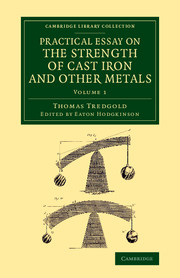
Practical Essay on the Strength of Cast Iron and Other Metals
- Containing Practical Rules, Tables, and Examples, Founded on a Series of Experiments, with an Extensive Table of the Properties of Materials
-
- Published online:
- 05 December 2014
- Print publication:
- 22 May 2014
- First published in:
- 1842

Meteorological Essays and Observations
-
- Published online:
- 05 December 2014
- Print publication:
- 21 February 2013
- First published in:
- 1827
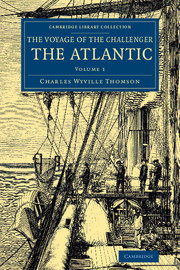
Voyage of the Challenger: The Atlantic
- A Preliminary Account of the General Results of the Exploring Voyage of HMS Challenger during the Year 1873 and the Early Part of the Year 1876
-
- Published online:
- 05 December 2014
- Print publication:
- 22 May 2014
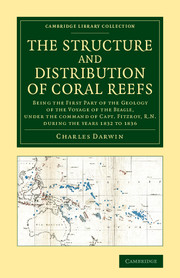
The Structure and Distribution of Coral Reefs
- Being the First Part of the Geology of the Voyage of the Beagle, under the Command of Capt. Fitzroy, R.N. during the Years 1832 to 1836
-
- Published online:
- 05 December 2014
- Print publication:
- 19 September 2013
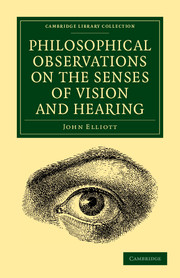
Philosophical Observations on the Senses of Vision and Hearing
- To Which Are Added, a Treatise on Harmonic Sounds, and an Essay on Combustion and Animal Heat
-
- Published online:
- 05 December 2014
- Print publication:
- 04 July 2013
- First published in:
- 1780
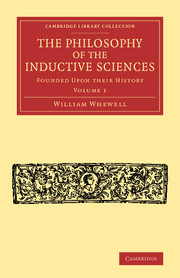
The Philosophy of the Inductive Sciences
- Founded upon their History
-
- Published online:
- 05 December 2014
- Print publication:
- 02 January 2014
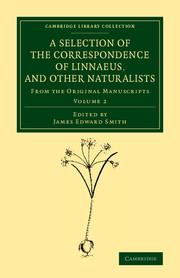
A Selection of the Correspondence of Linnaeus, and Other Naturalists
- From the Original Manuscripts
-
- Published online:
- 05 December 2014
- Print publication:
- 20 March 2014
CHAP. I - INTRODUCTORY
-
- Book:
- Facts and Arguments for Darwin
- Published online:
- 05 June 2015
- Print publication:
- 06 November 2014, pp 1-6
-
- Chapter
- Export citation
Frontmatter
-
- Book:
- Elements of Geology
- Published online:
- 05 June 2015
- Print publication:
- 06 November 2014, pp i-ii
-
- Chapter
- Export citation
INDEX
-
- Book:
- A Geological Manual
- Published online:
- 05 June 2015
- Print publication:
- 06 November 2014, pp 527-535
-
- Chapter
- Export citation
PREFACE
-
- Book:
- Elements of Geology
- Published online:
- 05 June 2015
- Print publication:
- 06 November 2014, pp v-viii
-
- Chapter
- Export citation
TRANSLATOR'S PREFACE
-
- Book:
- Facts and Arguments for Darwin
- Published online:
- 05 June 2015
- Print publication:
- 06 November 2014, pp iii-iv
-
- Chapter
- Export citation
CHAPTER X - METAMORPHIC ROCKS
- from PART I
-
- Book:
- Elements of Geology
- Published online:
- 05 June 2015
- Print publication:
- 06 November 2014, pp 219-240
-
- Chapter
- Export citation
Frontmatter
-
- Book:
- A Geological Manual
- Published online:
- 05 June 2015
- Print publication:
- 06 November 2014, pp i-iv
-
- Chapter
- Export citation
CHAPTER XVIII - OOLITE AND LIAS — continued
- from PART II
-
- Book:
- Elements of Geology
- Published online:
- 05 June 2015
- Print publication:
- 06 November 2014, pp 386-405
-
- Chapter
- Export citation
SECTION IV
-
- Book:
- A Geological Manual
- Published online:
- 05 June 2015
- Print publication:
- 06 November 2014, pp 181-253
-
- Chapter
- Export citation
